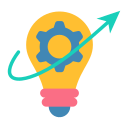The Impact of Technology on Home Office Spaces
The evolution of technology has fundamentally transformed the way we design, use, and experience home offices. As digital tools and connectivity become more advanced, the boundaries between traditional workplaces and personal environments blur. Modern home offices, influenced by technological progress, offer unprecedented flexibility, productivity, and comfort. This page explores how new devices, software, and connectivity solutions shape the modern home office, addressing both opportunities and challenges that arise when technology is integrated into personal workspaces.
Previous
Next
Enhancing Productivity with Smart Tools
Virtual assistants, driven by advanced AI, have become central to achieving daily goals in a home office environment. These digital helpers can manage calendars, send reminders, draft emails, and organize to-do lists, alleviating much of the administrative burden that once slowed productivity. Automation capabilities extend to managing repetitive tasks such as data entry or expense tracking, enabling users to concentrate on more complex and creative work. This shift has made it possible for home office workers to operate at a level of efficiency comparable to or even exceeding traditional office setups, all while maintaining greater control over their workday.
Designing the Tech-Enabled Workspace
Ergonomic Tech and Wellness Devices
Ergonomics plays a crucial role in the design of a modern home office, with technology offering innovative solutions for comfort and health. Adjustable smart desks and chairs, for example, adapt to individual postures to prevent strain and fatigue. Wellness devices, such as air quality monitors or connected lighting systems, help create healthier and more personalized work environments. These tech-driven enhancements ensure that remote workers are supported physically, promoting productivity without sacrificing well-being. With access to real-time data and feedback, individuals can make informed decisions about their workspace, leading to a sustainable and enjoyable work-from-home lifestyle.
Adaptive Lighting and Environmental Controls
Advanced lighting systems and climate controls are essential components of tech-forward home offices. Smart bulbs and automated shades allow for precise adjustments in brightness and temperature based on natural light levels or time of day. Such adaptability not only reduces energy consumption but also aligns with circadian rhythms, enhancing focus and comfort throughout the day. Personalized environmental controls create a tailored workspace atmosphere, making it possible to maintain optimal working conditions in diverse settings—from urban apartments to suburban homes. This flexibility is essential for long-term comfort and productivity in any home office setup.
Integrated Connectivity Solutions
Reliable high-speed connectivity is the backbone of any successful home office. Modern routers, mesh networks, and integrated Wi-Fi solutions ensure consistent internet performance even in homes with multiple users and devices. Additionally, hardware such as docking stations and wireless charging pads eliminate cable clutter, streamlining technology use and keeping desks organized. Seamless connectivity allows for smooth video conferences, uninterrupted downloads, and continuous cloud storage access, ensuring that home-based professionals are always connected to both colleagues and clients. Integration of such connectivity solutions is a hallmark of the modern, tech-empowered workspace.
Advanced Data Protection Measures
Modern home offices rely on a variety of data protection measures to safeguard both personal and business information. Encryption software ensures that files remain secure, even when transmitted over public networks. Multi-factor authentication and biometric verification are becoming standard features, raising security levels for daily operations. These technological advancements reduce the risk of data breaches and give professionals the peace of mind required to focus fully on their work. The ongoing development of protective software means that security solutions continue to evolve alongside emerging threats.
Secure Remote Access and VPNs
Virtual private networks (VPNs) and secure remote access tools are essential for professionals working from home. By channeling internet traffic through encrypted tunnels, VPNs shield sensitive information from potential cyber threats. Employers increasingly mandate VPN use to protect proprietary data, while individuals use these solutions to ensure their own privacy. Secure remote desktop software further ensures that only authorized users can interact with workplace systems, providing an extra layer of protection. These technologies empower users to access data securely from anywhere, thereby reinforcing trust in remote work arrangements.
Smart Home Privacy Concerns
The proliferation of smart devices in home offices brings new privacy considerations. Voice assistants, cameras, and IoT sensors collect and process a vast array of user data. While these devices enhance convenience and productivity, they also pose risks if not properly secured. Manufacturers and users must remain vigilant, regularly updating software and configuring privacy controls to prevent unauthorized access. A thorough understanding of device settings and permissions is necessary for safeguarding personal information, ensuring that technology remains a force for empowerment rather than a potential vulnerability in the home office.
Previous slide
Next slide
